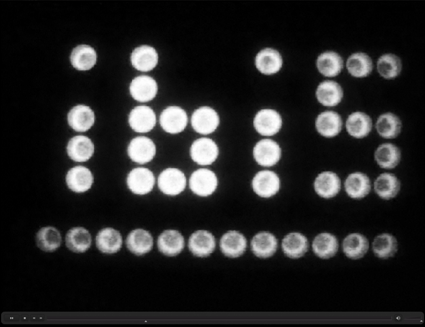Section: Overall Objectives
Overview
When confronted with changing environmental conditions, bacteria and other microorganisms have a remarkable capacity to adapt their functioning. The responses of bacteria to changes in their environment are controlled on the molecular level by large and complex networks of biochemical interactions involving genes, mRNAs, proteins, and metabolites. The study of bacterial regulatory networks requires experimental tools for mapping the interaction structure of the networks and measuring the dynamics of cellular processes. In addition, when dealing with such large and complex systems, we need mathematical modeling and computer simulation to integrate available biological data, and understand and predict the dynamics of the system under various physiological and genetic perturbations. The analysis of living systems through the combined application of experimental and computational methods has gathered momentum in recent years under the name of systems biology.
The first aim of the IBIS project-team is to apply such a systems-biology approach to gain a deeper understanding, on the mechanistic level, of the strategies that bacteria have developed to respond to changes in their environment. (The ibis was an object of religious veneration in ancient Egypt, particularly associated with the god Thoth. Thoth was seen, among other things, as a god of the measurement and regulation of events.) In particular, we focus on the enterobacterium Escherichia coli, for which enormous amounts of genomic, genetic, biochemical and physiological data have accumulated over the past decades. A better understanding of the adaptive capabilities of E. coli to nutritional limitations or other environmental changes is an aim in itself, but also a necessary prerequisite for the second and most ambitious aim of the project: interfering with the cellular responses by specific perturbations or by rewiring the underlying regulatory networks. This does not only spawn fundamental research on the control of living matter, but may ultimately also lead to practical applications. Because E. coli is easy to manipulate in the laboratory, it serves as a model for many pathogenic bacteria and is widely used in biotechnology, for such diverse applications as the development of vaccines, the mass production of enzymes and other (heterologous) proteins, and the production of biofuels.
The aims of IBIS raise new problems on the interface of biology, applied mathematics, and computer science. In particular, the following objectives have structured the work of the project-team: (1) the analysis of the qualitative dynamics of gene regulatory networks, (2) the inference of gene regulatory networks from time-series data, (3) the analysis of integrated metabolic and regulatory networks, and (4) natural and engineered control of regulatory networks. Although these axes cover most of the work carried out in IBIS, some members have maintained a research activity in their domain of origin (automatic control, molecular biology of HIV, immunology, ...) or made a contribution to research projects on different topics (human cancer cell genomics, plant modeling, ...). Since this usually represents a minor proportion of the overall research effort of the project-team, we will not describe this work in detail in the activity report. The publications resulting from these side-tracks have been included in the bibliography.
The challenges of the research programme of the IBIS team require a wide range of competences on the interface of (experimental) biology, applied mathematics, and computer science. (Figure 1 ) Since no single person can be expected to possess all of these competences, the international trend in systems biology is to join researchers from different disciplines into a single group. In line with this development, the IBIS team is a merger of a microbiology and molecular genetics group on the one hand, and a bioinformatics and mathematical biology group on the other hand. In particular, the IBIS team is composed of members of the group of Johannes Geiselmann, formerly at the Laboratoire Adaptation et Pathogénicité des Microorganismes of the Université Joseph Fourier (UJF, CNRS UMR 5163), and since September 2014 at the Laboratoire Interdisciplinaire de Physique (CNRS UMR 5588), and the members of the network modeling and simulation group formerly part of the HELIX project-team at Inria Grenoble - Rhône-Alpes, a group coordinated by Hidde de Jong. Both groups include researchers and technicians from other institutes, such as CNRS and the Université Pierre Mendès France (UPMF). The two groups have established a fruitful collaboration, which has resulted in more than 60 peer-reviewed publications in journals, conferences, and books since 2000. (See http://ibis.inrialpes.fr for a complete list.)
Hidde de Jong is the head of the IBIS project-team and Johannes Geiselmann its co-director. The experimental component of IBIS is also part of the Laboratoire Interdisciplinaire de Physique, and Johannes Geiselmann continues to represent this group in the interactions with the laboratory and university administration.
|



